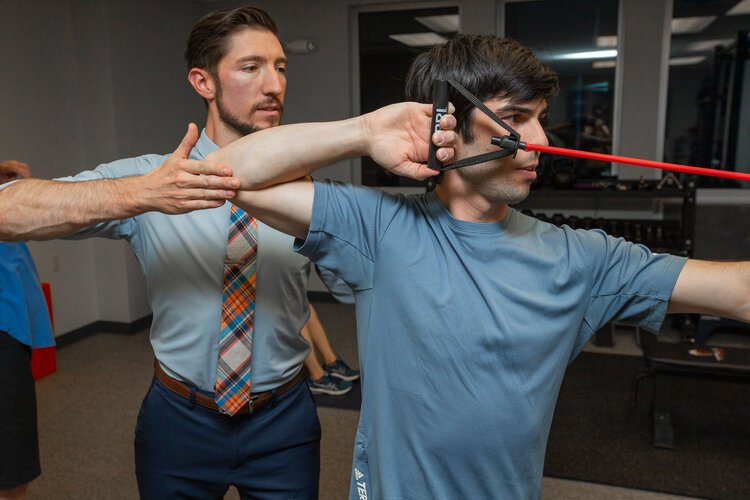
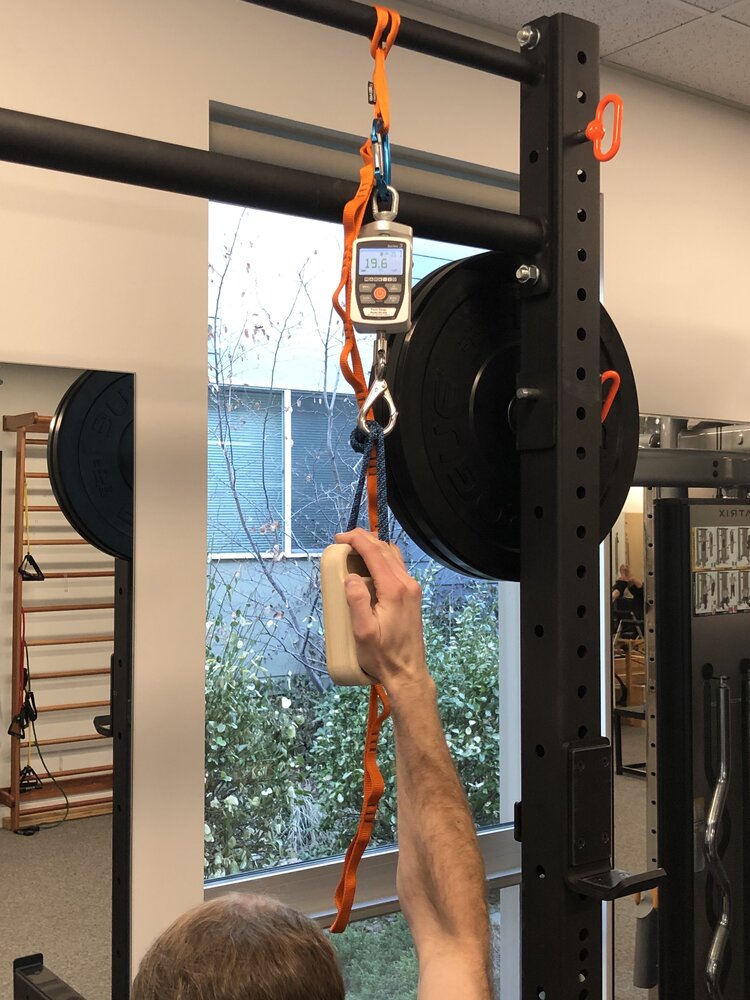
Physical Therapy for Rock Climbing Injuries
Scaling the face of a cliff is exhilarating, but a misstep or over training can leave you sidelined with an injury unlike any other. Rock climbing injuries present unique challenges, demanding more than generic physical therapy solutions. That’s where rock climbing physical therapy comes in, offering a targeted approach to restore your grip, reclaim your flexibility, and get you back on the wall with rock-solid confidence.
While a sprained ankle from a landing might seem straightforward, climbing injuries often involve intricate joints, muscles, tendons, and nerves. Think finger tendonitis from those killer crimps, carpal tunnel syndrome from days of dynoing, or shoulder impingement from countless mantle throws. These specialized musculoskeletal demands go beyond the expertise of most traditional physical therapists.
Say goodbye to generic rehab routines. Rock climbing therapy takes a deep dive into the biomechanics of your climbing style, pinpointing imbalances and weaknesses that contribute to your injury. Through personalized exercises, manual therapy techniques, and climbing-specific training, we’ll address not just the immediate pain, but also the underlying factors that put you at risk.
So, ditch the one-size-fits-all approach and climb smarter, not harder. Embrace the power of rock climbing physical therapy and experience the difference when your recovery comes from experts who understand the language of the crag. We’ll help you return to the rock stronger, smarter, and ready to crush your next climb.
Beyond Bouldering Bruises: Targeted Treatment for Climbing Injuries
From finger fire (pulleys and flexor tendon injuries) to cranky elbows (tennis elbow and medial epicondylitis), from shoulder struggles (impingement and rotator cuff woes) to neck niggles (belayer's neck, anyone?), we've got you covered. Each injury receives a holistic analysis, pinpointing the cause and charting a path to recovery. We don't just treat the symptom, we address the root, empowering you with knowledge and personalized exercises to get you back on the bouldering mat—stronger and smarter.
Here's a glimpse into our tailored approach:
- Finger Finesse: We decipher the intricate world of pulley and flexor tendon injuries, crafting specific programs to restore grip strength and flexibility.
- Shoulder Savvy: Whether it’s impingement, rotator cuff issues, or bicep tendinopathy, our shoulder specialists design interventions to rebuild stability and optimize climbing mechanics.
- Core Connections: Your core plays a crucial role in powering climbs. We assess and address any weaknesses or imbalances to maximize efficiency and prevent future injuries.
- Mobility Matters: From tight hips and thoracic restrictions to clunky wrists, we unlock your full range of motion, enhancing climbing freedom and reducing injury risk.
Our research-backed treatment plans extend to low back pain, neck pain, belayer’s neck, and even those all-important injury prevention strategies. Plus, we offer climbing-specific exercise programs to boost your performance and resilience without overdoing it.
Remember: Climbing smarter is just as important as climbing harder. Embrace the power of rock climbing physical therapy and experience the difference when recovery comes from experts who speak the language of the bouldering wall.
Break the Cycle, Not Your Body: Proactive Strategies for Staying on the Wall
At Mend Colorado, we believe recovery is just the first step. That’s why every treatment plan comes paired with personalized prevention strategies, empowering you to climb smarter and conquer challenges without compromising your health. We equip you with the knowledge and tools to break the cycle of injuries and stay firmly rooted on the bouldering wall.
Say goodbye to common climbing woes like finger pain, shoulder impingement, and belayer’s neck. Here’s a sneak peek into our science-backed arsenal:
Master the “Plus”
The subtle shift in a push-up, where only your torso moves on the shoulders, activates the serratus anterior muscle for rock-solid shoulder blade stability. This simple tweak trains oppositional muscles, creating a balanced powerhouse for every climb.
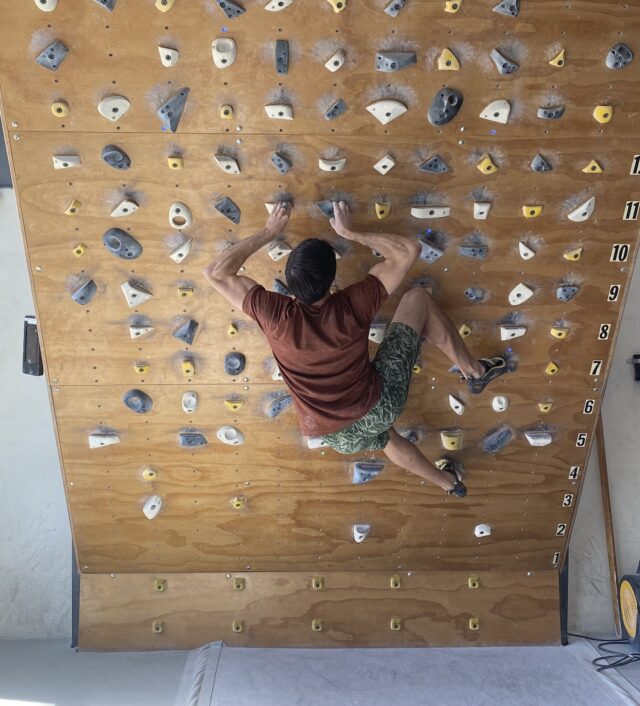
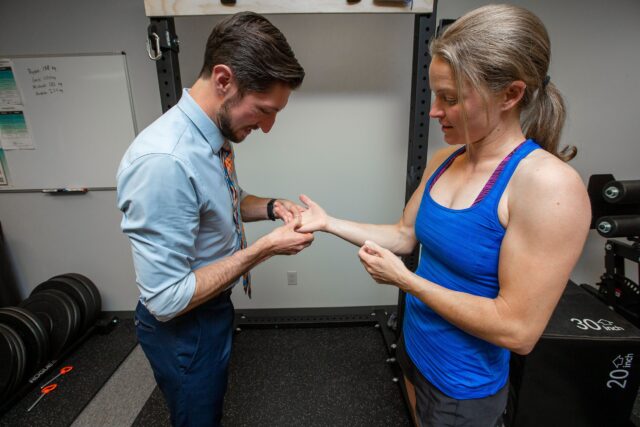
Embrace the T
Stand tall with thumbs facing backward and gently squeeze your shoulder blades together, sans the shrug. Start with a light resistance band, then graduate to heavier ones as you master the form. This targeted exercise strengthens the muscles crucial for retracting your shoulder blades, keeping your shoulders happy and pain-free.
Spread Your Wings
Similar to the T, the Standing Y opens your arms into a “Y” shape, engaging the lower traps. Remember, balance is key—focus on activating them without overworking. This dynamic movement enhances overall shoulder stability, letting you reach for those high holds with confidence.

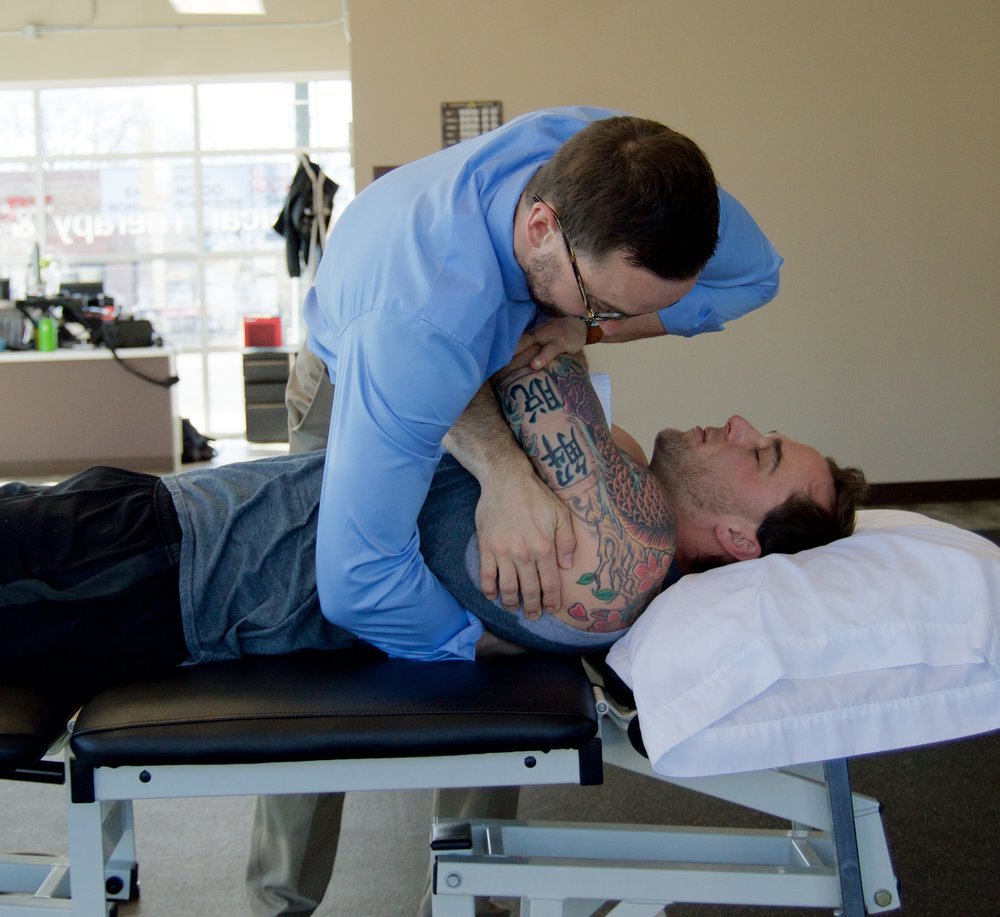
Unlock Your Spine
Feel the tightness melt away with the Open Book, an active stretch for your chest muscles. Rotate gently to each side, savoring the stretch without overextending your shoulders. This exercise targets your thoracic spine, often stiff in climbers, promoting optimal mobility and reducing injury risk.
These are just a taste of our comprehensive prevention toolbox. Ready to climb with confidence and minimize the risk of injuries?
Contact us today and let our experts guide you toward a stronger, healthier you!
Climbing Cramp? Conquering Carpal Tunnel Syndrome with Mend Colorado
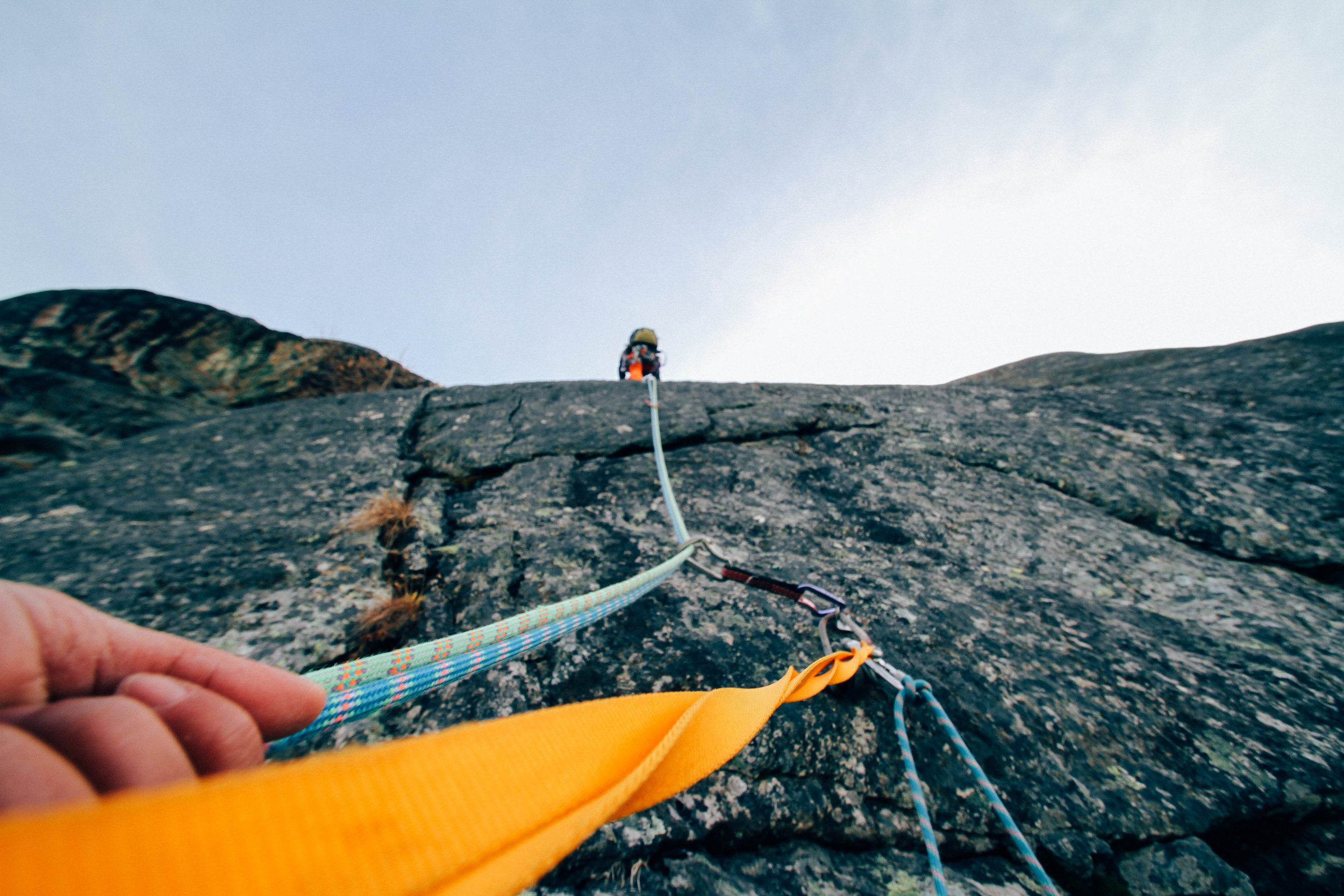
Carpal tunnel syndrome (CTS) can cast a shadow over even the sunniest climbing day. This pesky condition, caused by pressure on the median nerve in your wrist, brings unwelcome tingling, numbness, and weakness to your hand. At Mend Colorado, we’re experts in crushing carpal tunnel and getting you back on the wall with rock-solid hands.
Climbing and Carpal Tunnel: A Risky Relationship?
The intense hand and wrist flexion required for those epic sends and powerful dynoing can indeed increase the risk of CTS. But don’t despair! By understanding the causes and implementing smart prevention strategies, you can climb smarter, not harder, and keep your precious median nerve happy.
Unleash Your Inner Grip Ninja:
- Ergonomic Gripping: Master the art of finger placement and hand positioning to minimize stress on your wrists. Think open hand instead of death crimps!
- Strength and Flexibility: Build strong, resilient muscles in your hands, wrists, and forearms with targeted exercises. Don’t forget to stretch—those muscles and tendons need love too!
- Rest and Recuperation: Give your body time to recover between climbs. Aim to prioritize rest and listen to your body.
- Nighttime Splints: Keep your wrists comfortably neutral while you snooze, taking pressure off the median nerve and waking up to happier hands.
Climbing Back to Health: Treatment at Mend Colorado
If CTS has already taken hold, our comprehensive CTS treatment plans are designed to get you back in the climb with confidence.
- Personalized Assessment: We dive deep into your wrist and hand function, identifying individual risk factors and crafting a targeted treatment plan.
- Strengthening and Stretching: Custom exercises will get your hand, wrist, and forearm muscles singing again, reducing pressure on the median nerve.
- Manual Therapy Magic: Our skilled therapists work their magic with massage and mobilization techniques to boost tissue health and nerve function.
- Climb Smarter, Not Harder: We’ll guide you on modifying your climbing techniques and practices to prevent CTS flare-ups and let you enjoy the sport you love pain-free.
Don’t let CTS cramp your climbing style! Contact Mend Colorado today and experience the difference of specialized rock climbing physical therapy. Let our experts help you reclaim your grip, conquer discomfort, and scale new heights—with hands that are ready to rock!
Unearth Your Climbing Potential with The Mend Method
Rock climbing is a symphony of movement, but even the most captivating melodies can be disrupted by muscle imbalances. That’s where The Mend Method steps in, a holistic approach to rock climbing physical therapy designed to harmonize your body and unleash your climbing potential.
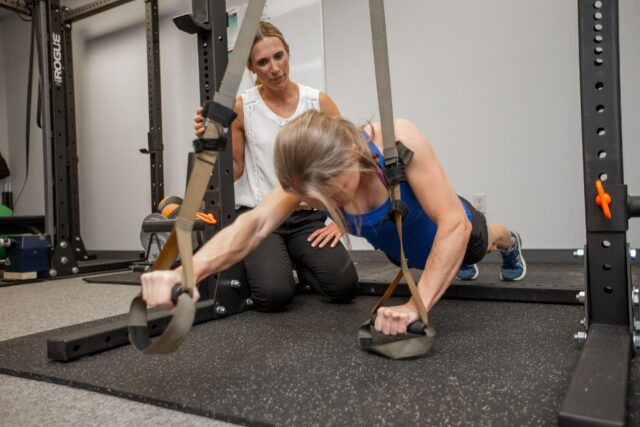
Beyond Band-Aids: A Deep Dive into Your Movement
Forget generic rehab routines. The Mend Method is a personalized journey, starting with a comprehensive movement analysis that goes beyond the surface. We delve into:
- Global Posture: From your head position to thoracic spine and shoulder alignment, we explore the foundation of your climbing.
- Shoulder Stability: Uncover and address any instabilities lurking in your shoulders, the workhorses of every powerful pull.
- Posterior Chain Power: Ignite your back and leg muscles, the engine driving your climbs.
- Joint Freedom: Unleash the full range of motion in your shoulders and thoracic spine, letting your body flow effortlessly.
- Muscle Balance Symphony: We assess your agonist and antagonist muscles, ensuring perfect teamwork for optimal climbing efficiency.
- Goal-Oriented Focus: Projecting a hard send? Training for a competition? We tailor your treatment plan to your specific climbing aspirations.
Based on your unique movement signature, we then craft a personalized treatment plan that’s as dynamic as your climbing style. This toolbox might include:
- Targeted Exercises: Strengthen weak areas, stretch tight muscles, and unlock new levels of control and power.
- Manual Therapy Magic: Our skilled therapists work their magic with massage, dry needling, mobilization, and other techniques to optimize tissue health and joint function.
- Climbing-Specific Training: Learn movement patterns and exercises that translate directly to your on-wall performance.
- Education and Empowerment: We equip you with the knowledge and tools to climb smarter, prevent future injuries, and become your own body’s advocate.
The Mend Method isn’t just about recovering from injuries; it’s about becoming a stronger, more resilient climber. We evolve with you, adjusting your plan as you progress, always with your long-term health and performance in mind.
Elevate Your Climb with Mend Partners

At Mend, we believe in fostering a community of support and expertise for climbers like you. That’s why we’re proud to partner with TrainingBeta, a leading resource for climbing knowledge and inspiration. Dive into our collaborative efforts:
- Understanding and Assessing Your Climbing Injuries: Join the conversation as our experts unpack the secrets of identifying and tackling climbing-specific aches and pains in this podcast. Get equipped with the knowledge to navigate injuries early and climb with confidence.
- Benefits of Strengthening the Posterior Chain in Climbers: Uncover the hidden power within! This insightful blog explores how building a strong back and legs can transform your climbing, unlocking explosive power, improved endurance, and better injury prevention.
Mend and TrainingBeta: a winning team for your climbing journey. Explore these valuable resources and join us in cultivating a stronger, healthier climbing community!
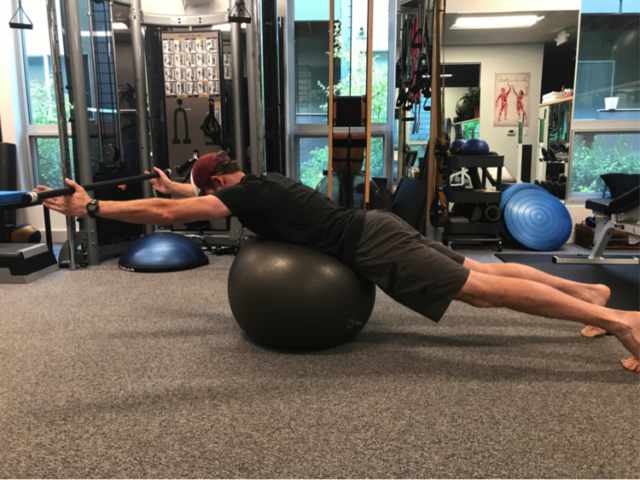
Accelerating Your Healing and Recovery with Rock Climbing Physical Therapy
Pushing your limits on the wall is exhilarating, but a climbing injury can throw you off your ascent. At Mend Colorado, we’re not just about treating those aches and pains—we’re experts in fast-tracking your recovery and getting you back on the crag, stronger and more resilient than ever.
Our secret weapon? A powerful toolbox of advanced therapeutic techniques:
- Manual Therapy: Think of it as therapy for your climbing-weary muscles, joints, and soft tissues. This targeted interventions boosts blood flow, melts away tension, and soothes pain, helping your injured tissues bounce back with lightning speed.
- Mobility Mastery: Climbing demands a body that bends, twists, and reaches like a pretzel. Our specialized mobility exercises unlock your full range of motion, banish stiffness, and ensure your joints move smoothly and efficiently, preventing future setbacks.
- Strength Reforged: Forget generic gym routines. Our climber-specific strength training programs zero in on building the power and endurance you need to conquer that next route. By addressing imbalances and strengthening your weak spots, you’ll not only recover faster but also build a fortress against future injuries.
At Mend, we tailor this recovery system to your unique needs and climbing style. We’re your climbing comeback crew, cheering you on every step (or grip!) of the way.
Ready to ditch the sidelines and reclaim your place on the wall? Contact Mend Colorado today and let’s turbocharge your climbing comeback!
Level Up Your Recovery: Finding the Climbing-Savvy PT Dream Team
Climbing throws down the gauntlet for your body, but when injuries strike, finding the right physical therapy can make all the difference between a frustrating setback and a lightning-fast return to the wall. So, how do you choose the perfect PT crew to rocket-boost your recovery and unlock your climbing potential? Look for these game-changing qualities:
Climb-Specific Savvy
- Climbing Experience: Find a clinician who participates in and understands the sport of climbing. Don’t leave your recovery to someone who doesn’t understand what is required of getting back on the wall safely and effectively.
- Biomechanics Brainiacs: Your PT should speak the language of climbing. They need a deep understanding of how your body twists, turns, and grips its way up the rock, allowing them to diagnose injuries like a laser and craft the perfect recovery plan.
- Climber Whisperers: Experience matters. Choose a team with a proven track record of helping climbers of all levels, from gym rats to crag crusaders. They’ll know your struggles, speak your language, and get you back to sending with confidence.
Beyond Band-Aids: A Holistic Approach to Recovery
- Full-Body Detectives: Don’t settle for one-dimensional assessments. Choose a PT who goes beyond the injury to uncover any underlying imbalances or weaknesses that might be holding you back. They’ll consider your unique climbing style, goals, and overall physical condition to design a personalized roadmap to recovery.
- No Cookie-Cutter Plans: Your body is a climbing masterpiece, not a mass-produced widget. Look for a team that tailors treatment plans to your individual needs and climbing ambitions, ditching the generic routines for bespoke exercises that target your specific weaknesses and unlock your strengths.
Advanced Tools for Peak Performance
- Cutting-Edge Recovery Rockets: Your PT toolbox should be brimming with the latest and greatest. Manual therapy to melt away tension, targeted mobility drills to unlock your full range of motion, and climber-specific strength training to rebuild power and resilience—these are the weapons that will get you back on the wall, stronger and more unstoppable than ever.
- Injury Prevention Pro-Tips: Recovering is great, but staying injury-free is even better. Choose a PT team that prioritizes prevention, providing you with smart training strategies, insightful knowledge, and empowering tools to keep your body in peak climbing condition.
Climbing Community Champions
- Wall Rats Welcome: Look for a PT crew that shares your passion for the sport. They’ll be actively involved in the climbing community, understanding your challenges and frustrations firsthand. Think inside jokes about dyno fails and beta secrets—this team will feel like your climbing fam.
- Your Recovery Guardian Angels: From day one to your triumphant return to the crag, your PT team should be there for you every step of the way. Choose a service that offers ongoing support, including follow-up assessments, plan adjustments, and endless encouragement.
Finding the right climbing-savvy PT team is the first step on your journey back to crushing sends and conquering epic routes. With these criteria in mind, you’ll be well on your way to discovering a dream team that elevates your recovery, unleashes your climbing potential, and fuels your passion for the sport.
Climbers Share Their Mend Colorado Recovery Stories
At Mend Colorado, we don’t just treat climbing injuries—we reignite the climbing fire in injured souls. We’ve witnessed countless journeys of grit, determination, and ultimate triumph, where climbers not only recovered, but returned to the wall stronger and more resilient to conquer routes they never thought possible. Let’s delve into a few of these inspiring stories:
REVIEWS
“I went to see Josh to help out with degeneration in my ankle. My orothopedic surgeon said there was nothing i could do. After the first appointment I was 60% better. Josh continued to work on my ankle for about 6-8 more weeks. He got me out of the boot cast and back to climbing and riding my mountain bike. I highly recommend Josh and Mend PT.”
Katie Dittmann
“Mend Physical Therapy in Boulder has exceeded my hopes and expectations over the past 3 years. The therapists are highly knowledgeable in their areas of specialty, but more than that, they take time to become familiar with each client’s unique challenges, goals, needs and desires. This foundation builds a relationship that facilitates healing and offers support that extends from in-office sessions through at-home PT exercises. They are superb!”
Sally Sporer
“Whether for bone health, strength, fitness, or longevity, Dr. Robert Adams is exceptional for specialized weight training. It’s reassuring to work with someone with such strong educational and professional experience. He instills confidence in his care, training, and recommendations. Highly recommend!
“
Rita Zamora
This is just a glimpse into the transformative power of Mend’s climbing-specific physical therapy. Each story is unique, but they all share a common thread: the unwavering dedication of our therapists, the personalized approach to recovery, and the unyielding spirit of the climbers themselves.
Ready to write your own comeback story? Contact Mend Colorado today and let our expert team be your guide on your journey from “sidelined sorrows” to “send-strong celebrations.” We’re here to help you rewrite your climbing narrative, one hold at a time.
Educational Resources
Frequently Asked Questions
Climbing demands repetitive gripping, reaching, and dynamic movements, often leading to injuries like finger tendon strains, pulley injuries, wrist and elbow tendinitis, shoulder impingement, knee ligament tears, spine pain, and ankle sprains or fractures.
Rock climbing PT goes beyond generic routines. We understand the unique biomechanics of climbing and address muscle imbalances and specific demands like joint stability and global mobility. Our tailored exercises, manual therapy, and prevention strategies target your climbing goals and challenges.
Recovery time depends on the injury severity, treatment plan, and your adherence to the treatment plan. During your initial assessment, we’ll provide a personalized timeline based on your specific situation.
A balanced mix is key! Train antagonist muscles (ones that oppose the primary climbing muscles), do joint mobility exercises, and practice climbing-specific conditioning for endurance and technique. We’ll tailor prevention exercises to your individual goals and weaknesses.
Yes, hangboards can improve grip strength, but use them safely! Start gradually, focus on proper form, incorporate rest days, and combine hangboarding with shoulder, arm, and core strengthening exercises.
Absolutely! We’ll identify the pain source and address it through manual therapy, corrective exercises, and climbing technique modifications. Our goal is to manage your pain effectively and help you continue climbing.
Warm up with dynamic stretches and light cardio to increase blood flow. Include mobility exercises for shoulders, wrists, and fingers. Cool down with static stretches for used muscles and consider foam rolling for recovery.
Regular flexibility exercises are crucial! Focus on shoulders, hips, and hamstrings, key areas for climbing. Yoga and Pilates can also boost overall flexibility and core strength, helping prevent injuries.
